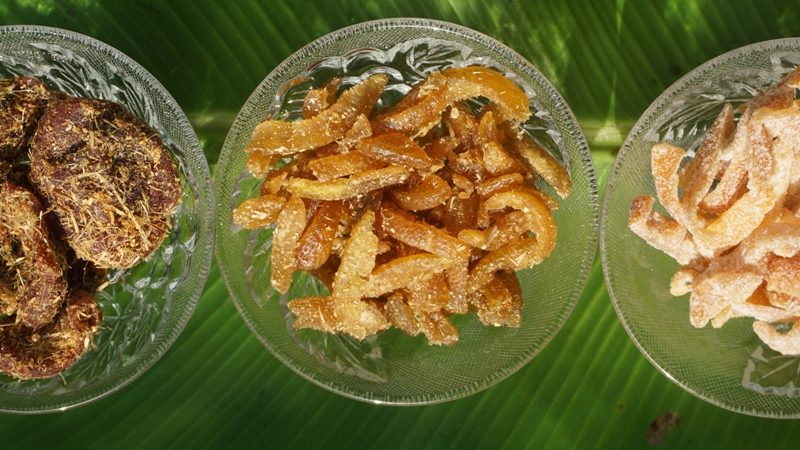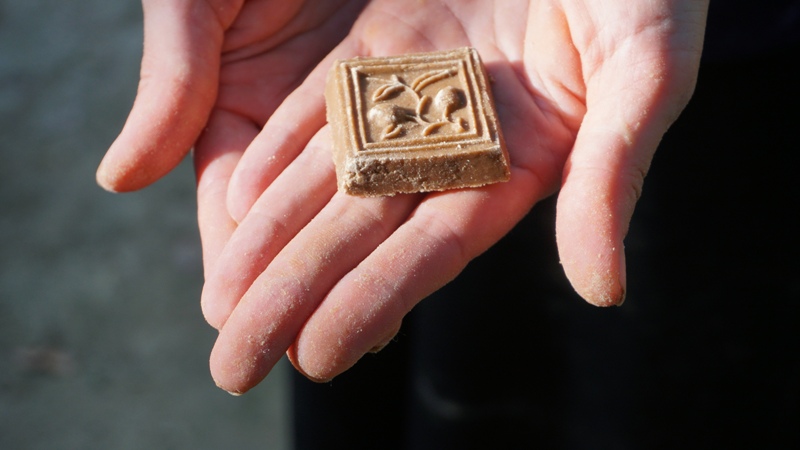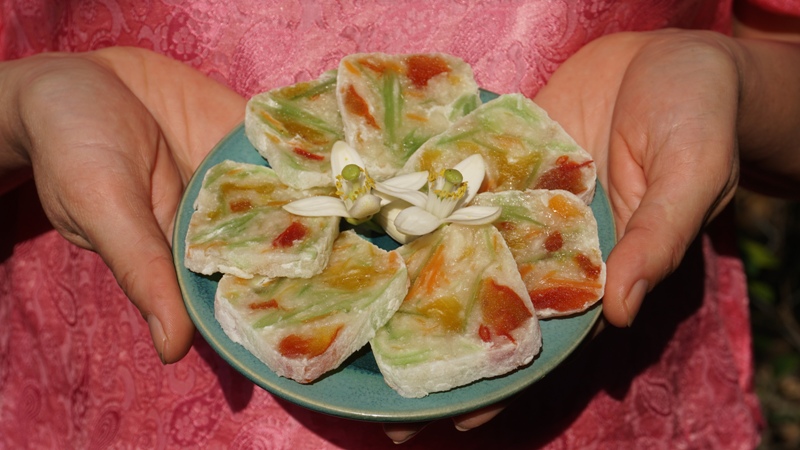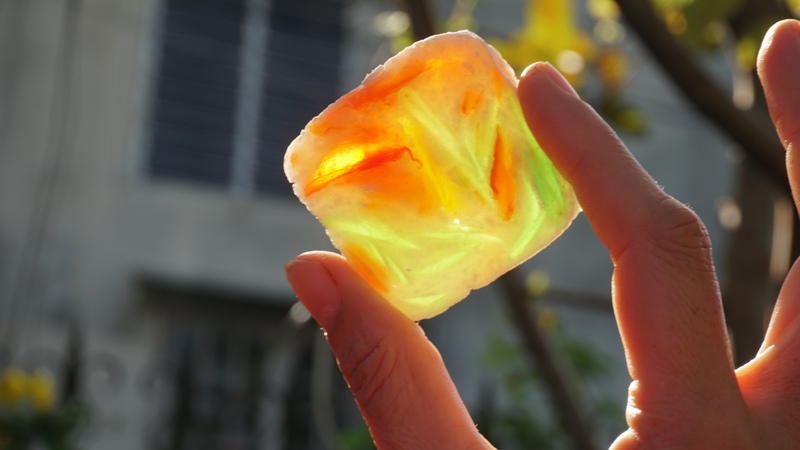The Huế people who underwent many natural disasters as well as wars and even epidemics, learnt how to appreciate mediocre foods, to include different kind of edible wild vegetables into their meals, and to reduce food waste. Some of them even took extra steps when using food scraps to make delicacies which were so mouth-watering that even people of means fell in love with. Of course, turning discarded ingredients into delicious snacks would take a lot of time and creativity but I guess my ancestors, who used to live with food scarcity, had no choice but learn to get accustomed to it.
Although we now live in abundance of food, my clever neighbor, dì Hương (aka Na), still keeps her habit of saving food in a magnificent way. To me, she is like a food magician who could turn even the modest ingredients such as fruit peel, rice bran, and leftovers into beautiful and tasty food. Here are such dishes she has made and shared with me.
Sugar-coated fruit peel
Snacks made from the peels of lemon, mandarin orange, kumquat and pomelo used to be rather popular in Huế. When I was a little girl, I loved buying sugar-coated mandarin orange packed in a tiny plastic bag after school. They were also used as one of the remedies for sore throat. I’m glad that dì Hương still makes these snacks from the organic citrus fruits her father plants so I can enjoy healthy and delicious snacks as before.

While those snacks are quite familiar to me, sugar-coated passion fruit peel is not that common but surprisingly savory. It’s mesmerizing to watch dì Hương transforming useless-looking rinds of passion fruit into good-looking edible flowers in this short footage that I made a while ago.
Bran biscuits
Bran is mostly used as a food for pigs. When it’s meticulously prepared by dì Hương, it becomes a healthy and tasty snack. She even takes it to new hights when molding it with an antique wooden mold passed down to her by her father-in-law. This mold is believed to be produced during the reign of Emperor Minh Mạng (1820-1841).

Bánh bó
In the old days, Huế people made bánh bó before Tết (Vietnamese’s lunar new year) to treat their guests during the first days of new year. It is a lovely combination of roasted sticky rice powder mixed with crumbs or small pieces of different kind of mứt (sugar-coated fruits or legumes) such as those which are made of coconut flesh, pineapple, papaya, tomato, carrot, wax gourd, especially ginger or mandarin orange’s peel, etc.) The mixture is kneaded well and shaped into square cylinders by hands or with a wooden mold. After a day or two, bánh bó can be cut into slices and ready to serve. This year dì Hương has made bánh bó from leftover mứt from Tết and she sometimes adds raisin to make it more flavorful. Bánh bó tastes quite sweet so it’s very nice to enjoy it with a cup of hot tea.

Bánh gấc
During Tết or full moon nights, many Huế people cook chè xanh đánh (sweet mung bean paste) and put it in a dozen of small bowls to offer to their ancestors. After the offering, they have it as a snack or dessert but because it’s quite sweet and plain, people try to re-purpose it. It can be used as a filling for bánh gấc whose shape is like a ripe kumquat fruit and whose orange shell is made of sticky rice paste mixed with the flesh of a gấc (perennial melon).

I love how dì Hương keeps her beautiful habit of re-purposing leftovers and discarded ingredients as this is a great way to save money, reducing food waste, and protecting our Mother Earth. I’m so lucky to have these handmade delicacies as my daily snacks instead of the mass-produced ones.

